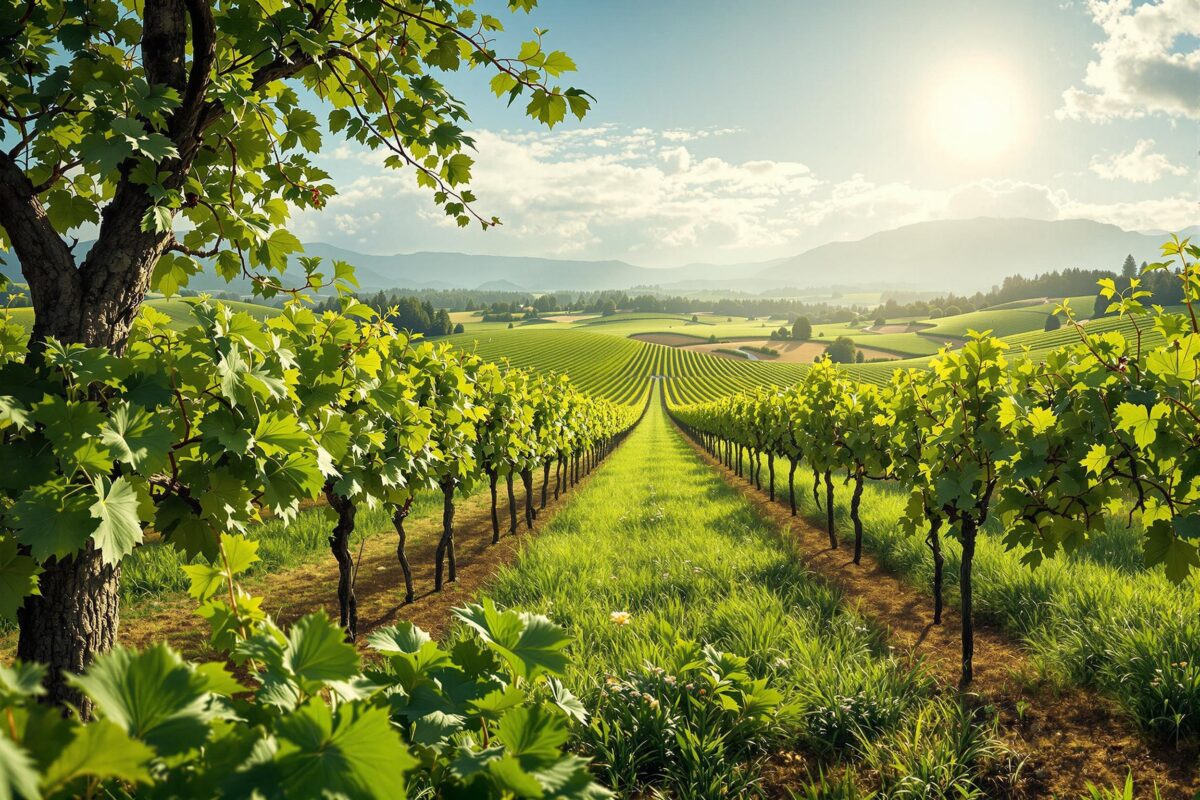The wine world is changing. Consumers are increasingly aware of the environmental impact of what they buy, and wine is no exception. This shift in consumer values is pushing the industry toward greater sustainability, demanding transparency and accountability from vineyard to glass. It’s not just a trend; it’s a fundamental change in how we think about growing grapes and making wine, with a focus on ecological balance and the long-term health of our planet. Wine certifications play a key role in this transformation, guiding wineries toward greener practices and reassuring buyers of their commitment.
Trend Analysis: Data & Emerging Practices in Organic & Biodynamic Wines
Organic Wine’s Growth Trajectory
The demand for organic wine, made without synthetic pesticides and herbicides, is exploding. Projections suggest a tripling of organic wine production by 2030. This isn’t just about environmentalism; many believe organic practices lead to better quality wine that truly expresses the terroir. Globally, certified organic vineyard acreage is increasing annually, especially in established wine regions and emerging markets alike. Government support and consumer education campaigns further fuel this growth, emphasizing the advantages of sustainable, organic agriculture.
Biodynamic Wine’s Rising Popularity
Alongside the organic movement, biodynamic viticulture is gaining significant traction. This holistic approach treats the vineyard as a living ecosystem, prioritizing soil health, biodiversity, and even lunar cycles. Younger consumers, in particular, are drawn to biodynamic wines, seeking authenticity and environmental responsibility. While precise market share data is difficult to obtain due to varying certification standards, the anecdotal evidence and expert opinions clearly indicate biodynamic’s growing influence. Its focus on minimal intervention and connection to nature resonates deeply with many wine lovers.
In-Depth Issue Breakdown: Challenges of Transitioning to Sustainable Methods
Economic Hurdles
Shifting to sustainable practices can be costly. Converting to organic or biodynamic methods requires upfront investment in soil remediation, new equipment, training, and certification. Yields may also dip initially as vineyards adjust. This can be a significant barrier, especially for smaller wineries. However, the long-term economic benefits – lower input costs, enhanced brand reputation, access to premium markets, and potential for wine tourism revenue – are becoming increasingly apparent.
Technical and Knowledge Gaps
Beyond finances, there are knowledge gaps. Organic viticulture requires specialized expertise in ecological principles, pest and disease control without synthetics, and soil optimization. Biodynamic farming demands an understanding of complex ecosystem interactions. Many conventional growers lack this training. Bridging this gap requires knowledge sharing through research institutions, industry groups, and experienced practitioners.
Regulatory and Certification Complexities
Navigating wine certifications can be a maze. Numerous schemes exist, each with different standards and scopes. Organic certification involves strict inspections and rules. Biodynamic certification has its own specific criteria. Emerging sustainability certifications, like those aligned with ISO 26000, add further complexity. A lack of global standardization poses challenges. Simplifying certification processes and increasing transparency would streamline adoption and build consumer trust.
Innovative Solutions: ISO Certifications & Regenerative Agriculture Breakdown
ISO 26000: A Framework for Sustainability
ISO 26000 offers guidance on key sustainability principles, including environmental protection, fair labor practices, and community engagement. While not a certification itself, it provides a valuable roadmap for wineries. Adopting ISO 26000 demonstrates a commitment to holistic sustainability, enhancing reputation and meeting consumer expectations. It can also facilitate stakeholder communication, improve risk management, and drive continuous improvement.
Regenerative Agriculture: Vineyard Health and Climate Resilience
Regenerative agriculture goes beyond organic and biodynamic practices, aiming to actively improve the environment. Techniques like cover cropping, no-till farming, and compost application sequester carbon in soils, improve water retention, and enhance vineyard resilience to climate change – a critical aspect of sustainable wine production. Regenerative agriculture offers both environmental and economic advantages.
Visual Comparisons: Infographics on Organic vs. Conventional Farming Impacts
Biodiversity Benefits of Organic Farming
Infographics powerfully illustrate the biodiversity difference between organic and conventional vineyards. Organic farms, free of synthetic pesticides and herbicides, support richer ecosystems. They showcase the abundance of beneficial insects, pollinators, and microorganisms in organic vineyards. These visuals effectively communicate the ecological advantages of organic practices, highlighting the tangible benefits of reduced chemical inputs.
Carbon Footprint Reduction through Organic Practices
Visuals also demonstrate organic viticulture’s lower carbon footprint. Conventional farming, with its reliance on synthetic fertilizers and energy-intensive practices, contributes significantly to greenhouse gas emissions. Infographics can quantify these differences, showcasing reduced energy use and enhanced carbon sequestration potential in organic vineyards. They underscore the importance of organic farming in mitigating climate change within the wine sector.
Practical Tips: How Wineries Can Embrace Eco-Friendly Practices Today
Water Conservation Techniques
Water is a precious resource. Wineries can conserve it by using drip irrigation, monitoring soil moisture, and planting drought-resistant varietals. Rainwater harvesting and greywater recycling can reduce reliance on external sources. Healthy soil, promoted by cover cropping and composting, retains water better, further minimizing irrigation needs.
Climate-Adapted Viticulture Strategies
Adapting to climate change is crucial. Strategies include choosing climate-resilient grape varieties, adjusting vineyard practices to manage heat and water stress, and exploring innovative trellising and canopy management. Proactive monitoring of vineyard microclimates is essential for informed decision-making.
Sustainable Wine Tourism and Consumer Engagement
Sustainable wine tourism connects wineries with eco-conscious consumers. Offerings like tours focused on sustainable practices, eco-friendly tasting rooms, and partnerships with local businesses can attract these visitors. Transparent communication about sustainability initiatives builds brand loyalty. Events and workshops can educate consumers about sustainable winemaking.
The move toward sustainability is essential for the wine industry’s future. From organic and biodynamic farming to wine certifications and climate adaptation, wineries are embracing change. TourDeWine supports these wineries, connecting them with consumers who share their values. By choosing sustainable wines, we contribute to a greener future for the industry.
